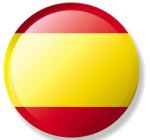+Info & booking : Barrancoakenay@gmail.com +34 608622404
Welcome to our website dedicated to via ferrata around Madrid! If you’re looking for an exciting adventure, a unique way to experience the natural beauty of this Spanish region, you’ve come to the right place. Via ferratas, offer an unforgettable experience for climbing and adventure enthusiasts. Through this website, we will guide you through the different via ferratas around Madrid, providing you with essential information, and inspiring you to explore these dizzying routes, nestled in the heart of breathtaking landscapes.
We can arrange departures from Madrid, providing all the technical equipment, insurance, permits where they are needed and an English-speaking instructor at the best price. Transport can also be arranged, from the centre of Madrid, if you do not have your own vehicles.
Via ferrata Prices
For more information or reservations, please contact us on +34 608 622 404 or by e-mail: barrancoakenay@gmail.com
Directory of via ferratas
- Ventano del diablo: Villalba de la Sierra, Cuenca
- Boca del infierno: Sacedón, Guadalajara
- Ranero: Huerta del Rey, Burgos
- Pasarela Espeja: Espeja de san Marcelino, Soria
- Las Buitreras: Priego, Cuenca
- El castillo: Fuertescusa, Cuenca
Via ferrata «Ventano del diablo»
Villalba de la Sierra is located about 180 kilometers east of Madrid, Spain. It is a small municipality located in the province of Cuenca, in the region of Castile-La Mancha, known for its picturesque landscapes and surrounding nature, and where you can practice many adventure sports
The Via Ferrata del Ventano del Diablo is a climbing route equipped with a series of cables, and iron steps attached to the rock face that allow climbers to progress safely along the cliff. One of the most outstanding features of this via ferrata is the feeling of suspension over the gorge of the Júcar River, offering breathtaking panoramic views.
The route includes several varied sections, ranging from vertical to slightly overhanging, as well as suspended walkways and a 30-meter zipline that add an extra element of excitement. The via ferrata of the Ventano del Diablo offers an interesting balance between physical challenges and grandiose landscapes.
Its difficulty is K4 and the duration of the adventure is 2 to 3 hours.
Via ferrata Boca del infierno: Sacedón
Sacedón is also located east of Madrid, Spain. Specifically, it is located about 90 kilometers from Madrid. The city can be reached by car from the Spanish capital in an hour.
The Via Ferrata de Sacedón: «Boca del Infierno» sits above the Entrepeñas reservoir and is characterized by its 4 bridges and a zip line that add extra fun for adventure seekers. Its difficulty is K2 and the duration of the adventure is about 2 hours.
Overall, the Via Ferrata de Sacedón above the Entrepeñas Reservoir is a mountain climbing experience that combines elements of excitement, natural beauty, and fun, making it an unforgettable adventure for thrill-seeking outdoor enthusiasts.
Via ferrata Ranero
Huerta de Rey is located northeast of Madrid, Spain. Specifically, the city is about 200 kilometers northeast of Madrid. Huerta de Rey is a small town in the province of Burgos, part of the autonomous community of Castile and León.
The via ferrata offers a unique climbing adventure with exciting challenges. Climbers are faced with vertical ladders that require them to climb vertical sections of the rock face. In addition, they cross bridges of various types, including suspension bridges, Tibetan bridges, and narrow walkways, adding an extra dimension to the excitement. To top it all off, pendulums allow adventurers to launch themselves into the void safely, adding a dose of adrenaline to this thrilling experience.
The difficulty of the via ferrata varies from K2 to K4 and it lasts about 3 hours.
Via ferrata de Pasarela Espeja
The course includes horizontal sections that follow the rock face, suspension bridges that challenge balance, a posible abseiling that provides very strong sensations, and a zip line that allows you to glide through the air while admiring the majestic landscapes that surround this mountain. This via ferrata offers a complete experience, mixing climbing, exploring steep gorges, and moments of pure adrenaline thanks to the zip line and abseiling.
The level of difficulty can vary, but this adventure is generally designed for intermediate to advanced climbers, as some sections can be technically and physically demanding. However, the rewards in terms of panoramic views and thrills are certainly worth it.
The difficulty of the via ferrata is K4 and it takes about 3 hours.
Via ferrata Las buiteras
The distance between Madrid and Priego is about 160 kilometres. It is a small town in the province of Cuenca, east of Madrid
This via ferrata offers a thrilling adventure for climbing enthusiasts, with a level of difficulty between K2 and K4, depending on the route chosen. Climbers will move along the rock face using safety equipment including harnesses, helmets and special lanyards.
The route features various sections, offering challenges suitable for different skill levels. Some parts of the via ferrata are relatively easy, with well-spaced ladders and holds, suitable for beginners and intermediate climbers (K2). However, other sections may present more advanced challenges, such as overhangs, aerial walkways, and more spaced holds suitable for experienced climbers (K4).
The difficulty of the via ferrata varies from K2 to K4 and it lasts about 3 hours.
Via ferrata Fuertescusa
The Via Ferrata «El castillo» is a via ferrata located in Fuertescusa, a small village in Cuenca. This via ferrata is designed to provide an exciting climbing experience while allowing participants to enjoy the beautiful scenery of this region.
The Via Ferrata Fuertescusa is a climbing route equipped with cables, metal ladders, and other safety devices attached to the rock face. It allows climbers to progress along the cliff while being secured with their equipment.
The Via Ferrata Fuertescusa route offers a variety of sections, ranging from vertical to slightly overhanging, as well as suspended walkways. This via ferrata is suitable for different skill levels, from beginners to more experienced climbers.
The difficulty of the via ferrata varies from K2 to K4 and it lasts about 2 hours.
Materials Needed
To practice via ferrata safely, you will need various equipment and materials.
- Via ferrata harness: A harness equipped with tether loops at the waist and thighs to allow you to attach to cables and rungs.
- Via ferrata lanyards: These are attachments that connect your harness to the anchor points of the via ferrata. They are equipped with energy sinks to absorb shocks in the event of a fall. Make sure the carabiners comply with safety standards.
- Helmet: A helmet is essential to protect your head from falling rocks and possible impacts. Make sure it’s comfortable and fits snugly.
- Descender or Ascender and Rope: Some via ferrata routes have inclined or descending sections where a belay device may be required.
- Pulley that will be needed in case there are zip lines on the course.
- Appropriate footwear: Wear sturdy hiking boots with a grippy sole for a better grip on rock faces.
- Appropriate clothing: Dress for the weather conditions. Comfortable and durable clothing is recommended. Special via ferrata gloves can protect your hands from abrasions.
- Backpack: A small backpack is useful for carrying water, food, and other small accessories.
Difficulty of a via ferrata
The difficulty rating of via ferratas in Spain usually follows a grading system that goes from K1 to K6, which has been developed to assess the level of difficulty of these routes. Here’s an explanation of the levels:
- K1 (Very Easy): Via ferratas at this level are designed for beginners. They are characterized by easy sections, not very steep, and numerous holds. The risk of falling is generally low.
- K2 (Easy): Easy via ferratas are suitable for people with basic climbing experience. They have slightly steeper sections, but are still accessible to beginner climbers.
- K3 (Not Very Difficult): Via ferratas at this level are intended for intermediate mountaineers. They feature vertical sections, ladders, bridges, and moderate overhangs. Mastery of basic climbing techniques is required.
- K4 (Quite Difficult): Fairly difficult via ferratas are designed for experienced mountaineers. They have steeper sections, steep overhangs, narrow walkways, and overhead passages. A good command of climbing is essential.
- K5 (Hard): Hard via ferratas are for experienced climbers only. They feature demanding vertical sections, large overhangs, complex routes and considerable technical challenges.
- K6 (Very Difficult): Very difficult via ferratas are intended for elite mountaineers. They feature extremely steep sections, massive overhangs, narrow and demanding sections, and require great physical strength and excellent climbing technique.

